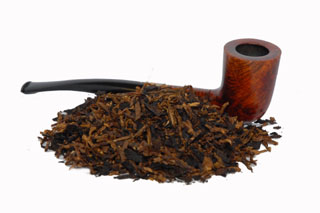How To Smoke a Pipe
Lighting the Pipe
Pipe Maintenance and Care
Breaking in the Pipe
Reaming the Bowl
Filling the Pipe
If you have recently purchased a brand new pipe, the first and most important process that you will need to do is to carefully 'break in' the pipe.
Although more expensive pipes will already have been pre-broken in by being carbonised to give a head's start, however these pipes will still require a 'breaking in' period
(only half of the bowl needs to be filled, best to pack the tobacco tighter than normal).
The process of filling in a pipe is rather straightforward, but you'll need to be careful as by doing it incorrectly will result in an unpleasant smoking experience and a waste of tobacco.
Ideally the tobacco needs to be packed inside the bowl in layers, try and pack the tobacco tighter as it'll help burn slower yet cooler although you may need to re-light it from time to time if the flame dies out.
By packing the tobacco loosely apart the more hotter it'll burn, resulting in an intense smoke but will lack in flavour but making it harsh and bitter. Smoking the tobacco too hot can actually damage and wear out the pipe
quite and inefficiently, it's important to find the right balance to compromise the pros and cons to your preferred style of smoking and best keep the smoke and pipe both cool whilst reducing the amount of times you'll need to
re-light the pipe and having to over drawing the pipe to keep the flame alive.

Another important factor is the type of pipe tobacco used, as this will also determine different results based on the type of tobacco
(i.e. burn rate, blend, leaves (fine cut/ribbon cut/coarse), manufacturer of pipe tobacco, etc).
The correct way to fill your pipe is to take 'pinches' of tobacco, The first initial pinch is placed at the bottom of the bowl and be tamped down using your fingers carefully and lightly enough to allow ait flow between the
tobacco leaves at the bottom of the bowl. Tamp the second layer down firmly followed by the third and so fourth until the pipe bowl is filled.
Follow these important steps to properly fill a pipe
1) Take a pinch of your chosen pipe tobacco and sprinkle it into the bowl until the is approx 3/4 full.
Ensure that the first pinch should only be tamped lightly to allow air to circulate at the bottom of the bowl.
2) Tamp the second layer down firmly, followed again by tampering the third layer. Repeat until the pipe is filled (for new pipes, only half is needed).
Make sure that the tobacco is firm enough in the bowl to feel spongy but
not too loose.
3) A good way to check on the tobacco consistency, simply draw through the mouthpiece to check air flow. If you find that it's suffering from a tight draw, you will need to adjust tampering the tobacco accordingly,
If the draw is tight, simply empty the bowl and start over otherwise you'll end up issues of having to consistently re-lighting the pipe and end up wasting a full bowl of tobacco making it an unpleasant smoking experience.
The type of tobacco used will vary depending how the pipe needs to be filled.
See the following below:
Ribbon Cut Tobacco - Typically holds more air, although requires a firm tamper.
Coarse/Plug Tobacco - Leaves too little air resulting in a slower paced smoke. Re-lighting is common requirement if the tobacco hasn't been filled properly.
Fresh Tobacco - Noticeably has a tighter pack, can cause blockage issues around the chambers from not enough air to circulate for combustion.
Dry Tobacco - Easy to fill, usually smokes hotter and burns quicker. The profile has harsh and bitterness taste qualities making it smoke intense.
Back to home page

 Another important factor is the type of pipe tobacco used, as this will also determine different results based on the type of tobacco
(i.e. burn rate, blend, leaves (fine cut/ribbon cut/coarse), manufacturer of pipe tobacco, etc).
Another important factor is the type of pipe tobacco used, as this will also determine different results based on the type of tobacco
(i.e. burn rate, blend, leaves (fine cut/ribbon cut/coarse), manufacturer of pipe tobacco, etc).